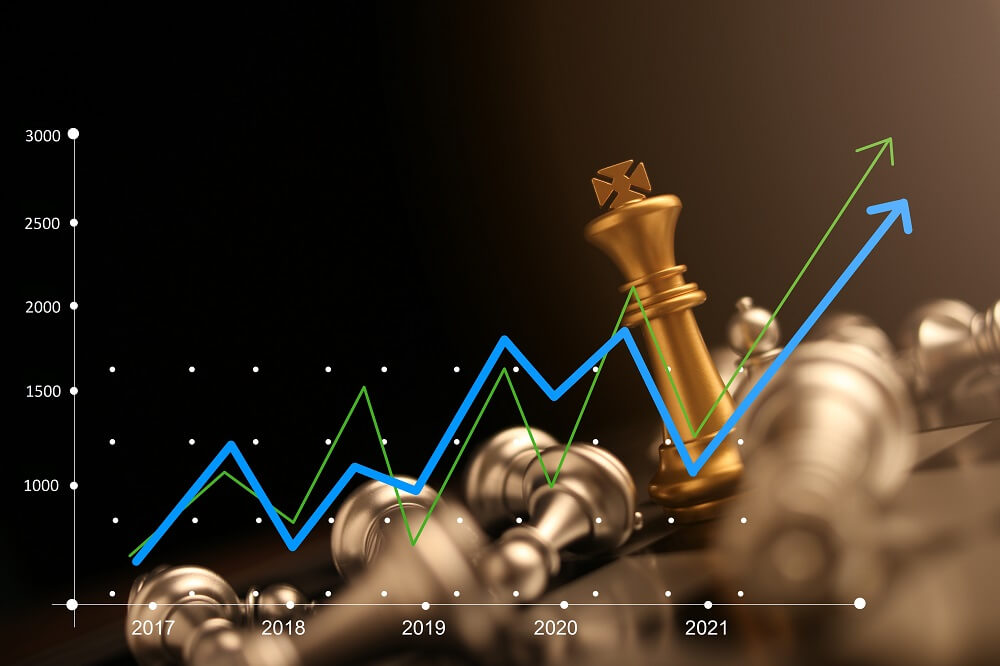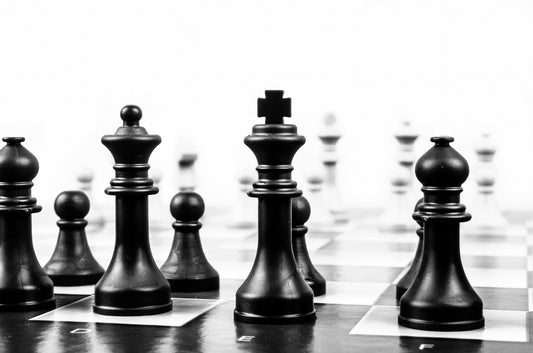
If you are a chess player, you have most likely faced the situation of being asked what your strength is. It is difficult to calculate such a thing, of course, especially when chess is such a complex game - perhaps you believe your strongest area is the amount of opening theory you know, while some other players may find that their biggest asset is how they handle endgame play; maybe you are a tactical and dynamic player who is great at calculations, but not as great at developing a long-term strategic plan.
Despite being a difficult task, this matter has interested players and theoreticians over decades, which lead to the emergence of rating systems.
The idea of a rating system is to calculate a single number for each chess player, that can describe the relative strength of that particular player. This number is based on the player’s results in chess games - their wins, draws and losses.
There are many different systems in chess, which have changed and evolved over time.
One of the first rating systems that arose was the Harkness System, developed by the Scottish chess player Kenneth Harkness. This was a fairly simple system, and the USCF (United States Chess Federation) used it for 10 years, between 1950 and 1960.
A few years later, the Hungarian-American physics professor and chess master Arpad Elo developed the system that is still widely used nowadays: the Elo rating system. Professor Elo used the Harkness System as a basis and improved it. In 1960, he presented his system to the USCF - it was accepted, and the Harkness System was replaced. Ten years later, in 1970, FIDE (World Chess Federation) also decided to adopt the Elo rating system.
What is the Elo rating system?
Elo’s idea was to create a personal number for each chess player that could help to predict his results. For instance, let’s imagine you are rated 1400 and are playing a match against a player who is rated exactly the same as you - regardless of the number of games, it is expected that both of you score 50% in that match, since you have the exact same rating. This “predicted” result would not lead to any changes in your personal rating number, nor in your opponent’s. Conversely, if you were to play a match against someone whose rating was 100 points higher than yours (let’s say, 1500) - you would be expected to score 36%, while your opponent would be expected to score 64%, due to his higher rating. If you were to exceed the expectations and score higher than that, this would lead to an increase in your personal rating number, and a decrease in your opponent’s. The opposite is also true: if you were to score less than 36%, your rating would obviously decrease.
In every chess game in the world that is subject to Elo rating calculations, the winner takes points from the loser. The amount of points that are won and lost by each of the players depends on the difference between the ratings.
If the difference is big and the winner is the higher-rated player, he will only win a few points, and the lower-rated losing player will only drop a few. This is because when the difference between two players is large, the result was expected to be a win for the higher-rated player - but since the likeability of a win is never 100%, there are always a few points to be increased to his rating for winning the game.
On the other hand, if a lower-rated player surprises a higher-rated opponent and scores a win or a draw, this will result in a bigger change - he will win a greater amount of points, that will be, in turn, taken from the losing part.
This means that the Elo rating system has an interesting particularity: it is self-correcting. If your rating is lower than you believe it should be, fear nothing, as by winning against higher-rated opponents you will quickly climb up the ladder!
Are there any other famous rating systems?
Very recently, a revolutionary new sports rating system has been launched. It is called the Universal Rating System (URS), and its developers are well-known chess theoreticians and masters. The research project that lead to this system has been funded by famous chess-related organizations: the Grand Chess Tour, the Kasparov Chess Foundation and the Chess Club and Scholastic Center of Saint Louis.
While the Elo rating system differentiates between the three major time controls used in tournament chess (classical, rapid and blitz), the Universal Rating System includes all three time controls within a single rating number for each player in the world.
Quoting the URS official website, their «(...) research indicates that incorporating both slow and fast-play results provides better information regarding a player’s overall chess ability. The enlarged pool of data aids the overall accuracy of the rating system and improves our ability to estimate the strength of a player at classical time limits».
However, not all games have the same weight in the final calculations. A blitz game, for instance, is seen as more unpredictable and chaotic than a classical game, and therefore is considered less informative about a player’s overall strength in chess.
The URS has been growing over the past few years, mainly due to the organizations that support its idea. However, most of the major chess organizations in the world still use the Elo rating system in their calculations.
Is the Elo rating system used everywhere?
Despite having been created in a less technological era than the one we are living in nowadays, the Elo rating system still stands as the most widely used in chess. It has also been adapted to other sports, such as basketball, baseball, football and various e-sports. This system is simple and intuitive, and is perceived as fair.
Commonly, the term “Elo Rating” is used as a synonym to “FIDE rating”. However, this may be slightly confusing, as the USCF and other major chess entities have their own Elo-based systems, while being different from FIDE’s calculations.
None of these organizations follow Elo’s original system step by step - all of them have implemented changes and improvements in specific things, which has lead to the emergence of many different individual systems.
If you are from the United States or are familiar with USCF ratings, you will know that they differ rather significantly from FIDE ratings.
Usually, a player’s USCF rating is 50-100 points higher than his FIDE rating, and you may be wondering why that happens, since both organizations rely on the same idea to calculate their ratings.
The main reason why this happens is that there are many tournaments that account for USCF ratings in the United States, and not that many tournaments accounting for FIDE ratings. Usually, FIDE-rated tournaments have a higher level, and some of them are exclusively created for professional players or dedicated masters. This is the reason why USCF ratings seem to be inflated in comparison with FIDE ratings: since an average player will participate in USCF-rated events more often than in FIDE-rated events, an increase in his strength will be shown much more quickly in his USCF rating than in his FIDE rating.
An important concept in the Elo rating system, which also varies from one organization to the other, is the K-factor.
What is the K-factor?
The K-factor is a very important number in the calculation of chess ratings. It is the number that indicates the maximum number of points that you can win or lose in a single chess game. Thus, this number also indicates the speed at which you will increase or decrease your rating.
Let’s say that the K-factor number is, for instance, 40. This means that you may win up to 40 points of rating in a single game. However, it also means that you can never lose more than 40 points in a single game.
The higher the K-factor, the faster a chess player will achieve a rating that indicates their true strength, whether it is higher or lower than their current rating. If you consistently perform above the expectations with a high K-factor, you will climb up the rating ladder much quicker than by achieving the same results with a low K-factor. The opposite is also true, of course - if you perform below the expectations with a high K-factor, you will quickly drop a high amount of points.
It must also be noted that a higher K-factor leads to higher fluctuation and instability in rating systems, as a single unexpected result can have significant consequences in a player’s rating.
FIDE uses variable K-factor numbers according to the circumstances. They are as follows:
- K = 40, for a player new to the rating list until the completion of a total of 30 games, and for all players until their 18th birthday, as long as their rating remains under 2300.
- K = 20, for players with a rating under 2400.
- K = 10, for players with any published rating of at least 2400.
The USCF has different values for the K-factor, which are generally higher and may also contribute to explain the difference between USCF and FIDE ratings.
- K = 32, for players rated below 2100.
- K = 24, for players rated between 2100 and 2400.
- K = 16, for players rated higher than 2400.
Higher-rated players have a reduced K-factor number in order to prevent rapid fluctuation or inflation/deflation of the world’s best players’ ratings.
What about my online rating?
Many chess players, whether they regularly play on the board or not, spend a fraction of their time playing in online chess websites, such as chess.com, lichess, chess24 or ICC (Internet Chess Club).
In order to increase competition and simulate a real-life experience, in which players can track their progress without leaving the comfort of their homes, these websites have their own rating systems.
If you have friends who are chess enthusiasts, you have most certainly heard them mention their online rating before, or try to compare it with FIDE/USCF official ratings.
As meritory as it is to achieve a high rating in a chess website, it is not the same thing as achieving it in real-life chess tournaments. In general, online ratings are far higher than official ratings - though many experienced players have lower online ratings because they are used to official tournament setups and can only concentrate in such an environment.
Many people think that the reason why online ratings are higher is because the K-factor number is also generally higher. However, as mentioned before, the K-factor alone does not lead to an increase in ratings; it only leads to a faster adjustment of a player’s level, whether it is towards a higher or a lower rating.
The main reason why it is, in general, easier to achieve a higher rating while playing chess online is because you can choose your opponent. In many websites, you can choose not to be paired with players below a certain rating; in many others, when you are paired against much lower-rated opponents, you can abort the game and try to find a player within the range you wish to face.
By doing this, players whose rating is very high can choose to only play against opponents whose rating is also high, avoiding major rating losses.
In conclusion, rating systems are extremely important in the world of competitive chess. They can help us measure our strength and track our progress, follow the best chess players in the world, and they also often constitute a motivational factor to go beyond our abilities and improve our results.
If you wish to start improving your own rating, why not start by acquiring one of our chess boards so that you can start practicing right away?
Sign up to our e-mail newsletter - don't miss out on any of our new articles, promotions or giveaways!





